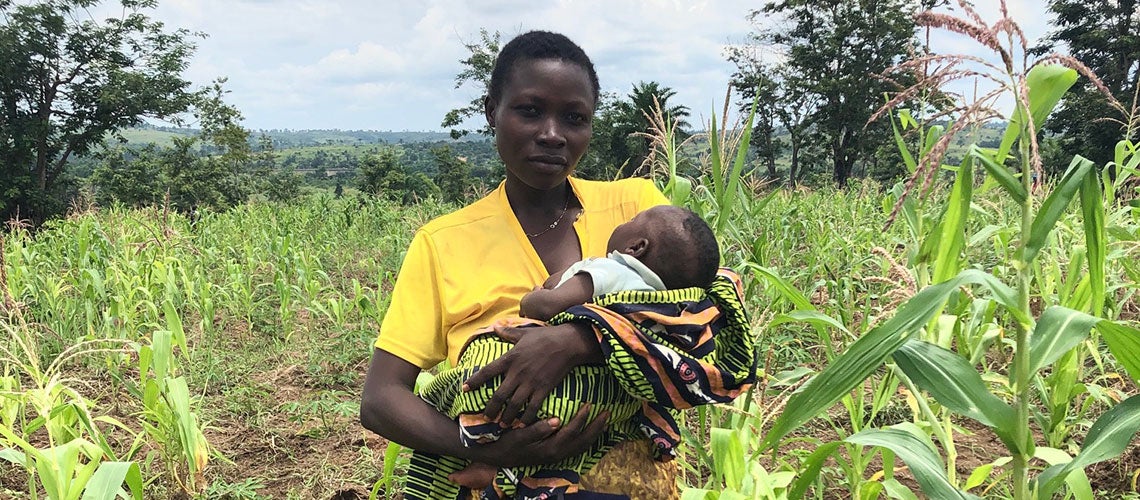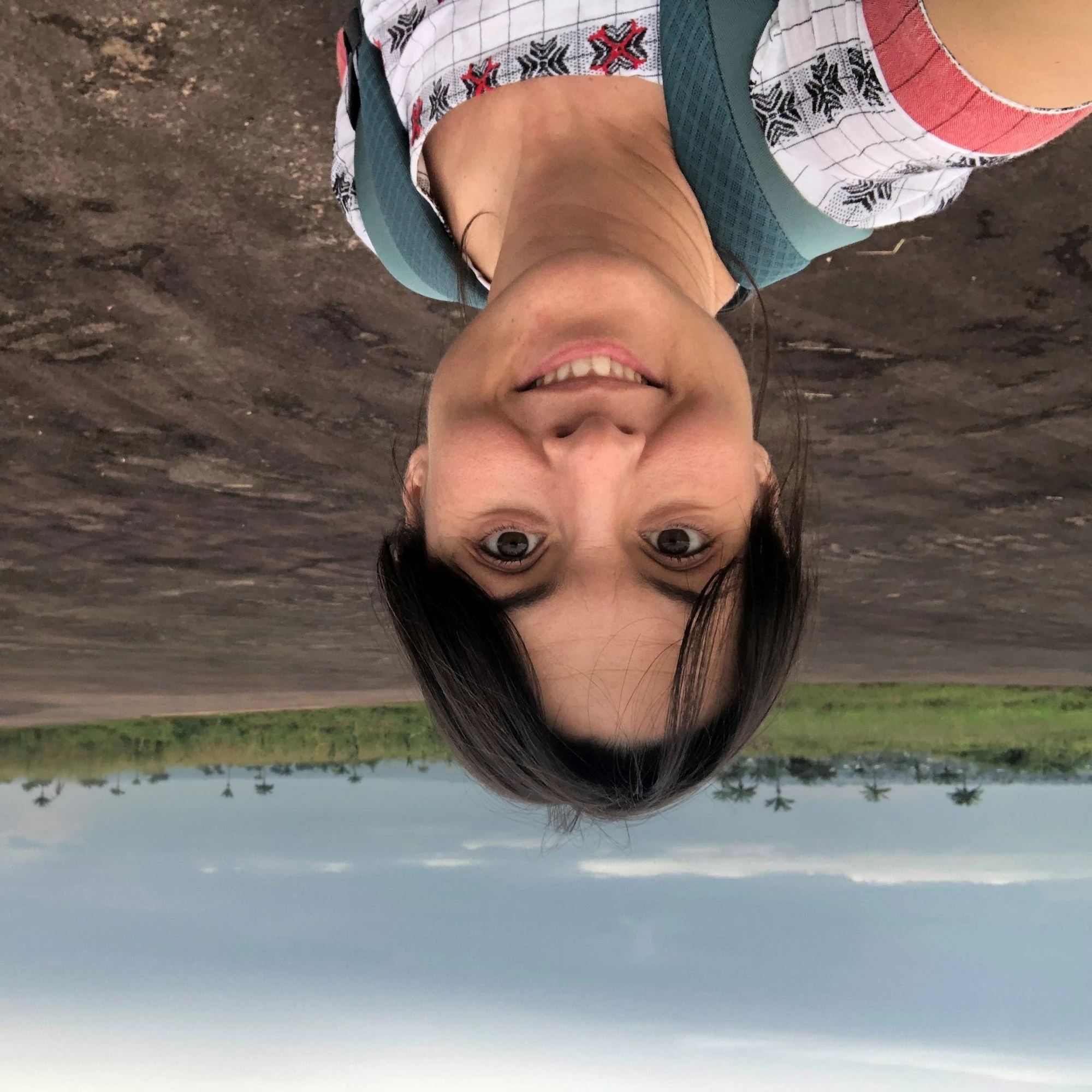 Pour une agriculture profitable et soucieuse des enjeux climatiques et nutritionnels. Photo: Minna Kononen/Banque mondiale
Pour une agriculture profitable et soucieuse des enjeux climatiques et nutritionnels. Photo: Minna Kononen/Banque mondiale
While in Kananga, Province of Kasai Central, Democratic Republic of Congo (DRC), we met Agnes, a farmer who comes to work on the agriculture fields of Coopérative Réveil Kananga (CRKa) to earn much needed income. The Cooperative has given her a small plot and technical assistance to grow maize. Using climate smart agriculture practices, she has been able to increase her yield in the past few years. The average yield in the CRKa plots is 600 kg/ha, which is almost double of the region (350kg/ha). CRKa currently has 500 farmers, and they support agriculture practices that conserve the fertility and capacity of the soil, improve yields and are more resilient to climate hazards such as flooding and prolonged periods of drought.
The cropping calendar in DRC is changing everywhere. Last year, farmers in the Kasai region experienced severe crop losses due to late arrival of the rainy season and sudden onset of erratic rainfalls, that eventually destroyed the recently planted crops. However, climate smart agriculture practices, like the ones used in the fields of CRKa, have helped farmers reduce losses. One of the practices used by Agnes is the improvement of fallow with mucuna, a green manure cover crop that provides shading and prevents the top of the soil from overheating and drying out or being easily washed away by heavy rains. Mucuna is also a legumes plant, which possesses the ability to fix nitrogen in the soil and serve as a source of organic matter (‘green manure’) when incorporated into the soil.
We also met with Kasonga, grandmother who works on the CRKa fields and at the same time is helping to care her youngest grandchildren while their mothers (her daughters) do manual work on the field. She has eight children and 41 grandchildren. In DRC, average birth rate is 6.77 children per woman and the population of the DRC, currently at 81 million, is expected to reach almost 200 million by 2050. The 2016 Cost of Hunger in Africa study found that undernutrition costs the DRC 4.6 % of its Gross Domestic Product (GDP) – equivalent to US$ 1.7 billion – every year. Increasing the yields in a sustainable manner and improving the nutrition of children is a priority for rapidly growing population.
Menu of smart practices for smallholder farmers
To support Agnes and Kasonga to increase their incomes and improve nutrition for their children and grandchildren, DRC needs policies and programs that help them achieve this double objective. They do not only need to improve their yields, but these improved yields need to be sustained in a changing climate and they need to also promote the production of nutrition rich food products.
This is why the Government of the DRC and the World Bank are preparing the National Agriculture Development Program (NADP), a series-of-projects over 15 years and with $US 1,500 million in IDA-financing. The NADP, in its first phase, is expected to provide direct support to approximately 2,000,000 smallholder farmers to improve their agriculture productivity and market access in five provinces of the DRC (Kongo Central, Kwilu, North Kivu, Kasai, and Kasai Central) using climate and nutrition smart agriculture technologies and practices.
The NADP’s support to smallholders includes a series of improved technologies and practices that have been pre-selected based on their “smartness”. These choices of technologies and practices are offered to smallholders under a menu of options of smart agriculture.Being smart means achieving several objectives at once. Through field studies and consultations, an indicative menu of smart agriculture technologies and practices has been identified as being climate and/or nutrition smart. Technologies such as biofortified seeds for manioc, production practices for vegetables, poultry and eggs are considered nutrition smart as they address a much-needed food groups deficit in a region where malnutrition is common. Also, short-cycle varieties, drought resilient seeds, and practices such as conservation agriculture and agroforestry are considered climate smart as they improve farmers’ resilience, yields and diversify production.
The NADP will support smallholder farmers by providing a subsidy, tailored for each of the technologies and practices included in the menu, to cover part of the initial investment related to inputs (e.g. seeds, animal breeds, labor, extension services). This incentive will help accelerate the adoption of sustainable practices that have positive nutrition and climate outcomes. To assure local ownership and sustainability of the investments, the subsidy is designed to provide on-demand support to smallholders and crowd in private agriculture input suppliers and service providers. In the DRC, 77% of women are employed in the agricultural sector, compared to 61% of men, which makes targeting of women as beneficiaries of the project a priority for the government. The subsidy program will have a 50% quota for women farmers which will be implemented using eligibility criteria that specifically take into account the significant contribution of women in the sector.
Eligible smallholder farmers will be selected from a national farmer registry that is available to everyone through decentralized registration points across the country. Each farmer that wants to register will be issued a professional identification card. Project financing will support the setup of this new farmer registry, including the ICT-platform which will facilitate long-term monitoring of the program.
DRC has the potential to become an African agriculture powerhouse, with nearly 80 million hectares of arable, non-forest land, and a young, growing population. The important question now for DRC is “how” will they increase their production, and “what” will they produce? For Agnes and Kasonga, these are two important questions that will make the difference in their and their families’ lives.



Join the Conversation